10 Alluring Places Not To Miss In Spiti Valley
By: Priyanka Maheshwari Tue, 13 June 2023 11:07:58
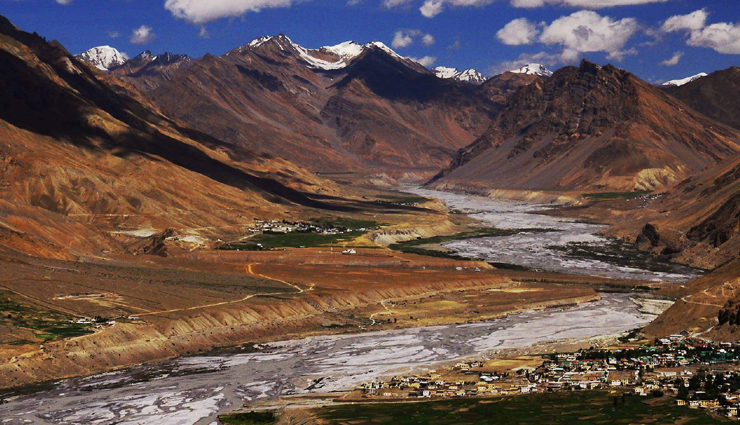
Spiti Valley, often referred to as a "world within a world," is a remote and picturesque region nestled in the Trans-Himalayan belt of the Indian state of Himachal Pradesh. Located in the northern part of the country, it is bordered by the mighty Himalayas on one side and the barren Tibetan plateau on the other. With its breathtaking landscapes, ancient monasteries, and rich cultural heritage, Spiti Valley has become a popular destination for adventure seekers, nature enthusiasts, and spiritual seekers alike.
The word "Spiti" translates to "The Middle Land" in the local language, indicating its strategic location between India and Tibet. The valley is characterized by its rugged terrain, soaring snow-capped mountains, deep gorges, and pristine rivers. It is renowned for its unique geological formations, including towering cliffs, fossil-rich mountains, and the famous "Mummy of Sangha" – an ancient mummy discovered in one of the valley's villages.
Spiti Valley is home to a small population of warm and friendly people who primarily follow Tibetan Buddhism. The region boasts numerous ancient monasteries, or gompas, perched on rocky hillsides, offering a glimpse into the region's spiritual and cultural heritage. The key monasteries of Spiti Valley include Key Monastery, Dhankar Monastery, Tabo Monastery, and Lhalung Monastery, each adorned with beautiful murals, thangka paintings, and ancient scriptures.
The valley also presents a haven for adventure enthusiasts with its challenging trekking trails, high-altitude passes, and opportunities for mountain biking, camping, and rock climbing. The world-famous "Spiti-Kinnaur Circuit" is a thrilling journey that takes travelers through stunning landscapes, remote villages, and ancient trade routes. Moreover, the region offers breathtaking views of the night sky, making it a paradise for stargazers and astrophotographers.
While Spiti Valley remains relatively isolated due to its harsh climate and limited connectivity, it has gradually gained popularity among travelers seeking an offbeat destination. The journey to Spiti is an adventure in itself, with treacherous roads, narrow mountain passes, and a challenging high-altitude environment. However, the rewards are immense, as visitors are treated to awe-inspiring vistas, cultural immersion, and a sense of tranquility that can only be found in this pristine corner of the Himalayas.
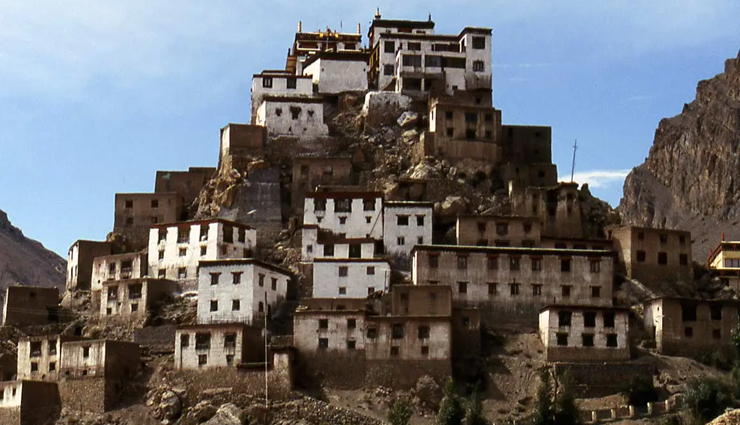
# Key Monastery
Key Monastery, also known as Kye Gompa or Ki Monastery, is one of the most iconic and significant monasteries located in Spiti Valley, Himachal Pradesh, India. Situated at an altitude of 4,166 meters (13,668 feet) above sea level, it is perched on top of a picturesque hill overlooking the Spiti River.
Key Monastery holds immense religious and historical importance as it is believed to be over a thousand years old, making it one of the oldest and largest Tibetan Buddhist monasteries in the region. The monastery is a prominent center for learning, meditation, and religious practices, attracting scholars, monks, and spiritual seekers from across the globe.
The monastery's architecture is reminiscent of a fortress, with its massive whitewashed walls, fortified towers, and narrow passages. It has a distinct Tibetan influence in its design and is a striking sight against the backdrop of the rugged Spiti Valley. Inside, the monastery houses an impressive collection of Buddhist scriptures, ancient murals, thangka paintings, and statues of deities.
Key Monastery serves as the religious training center for hundreds of lamas (Buddhist monks) who reside within its premises. The monks follow the Gelugpa sect of Tibetan Buddhism, which is also known as the Yellow Hat sect. Visitors to the monastery have the opportunity to witness the monks engaged in their daily rituals, prayers, and chanting, providing a glimpse into the monastic life and spiritual practices.
One of the highlights of visiting Key Monastery is the serene and peaceful ambiance it offers. The monastery's location on a hilltop provides breathtaking panoramic views of the surrounding mountains, valleys, and the Spiti River flowing below. The landscape's raw beauty and the spiritual atmosphere make it an ideal place for meditation, reflection, and inner exploration.
Apart from its religious and cultural significance, Key Monastery also serves as a vital center for the preservation of Tibetan art, culture, and Buddhist teachings. It has played a crucial role in safeguarding and promoting the ancient traditions and practices of Tibetan Buddhism in the Spiti Valley.
Key Monastery is accessible to visitors throughout the year, although extreme weather conditions during the winter months (November to February) may limit access. The best time to visit is during the summer months (June to September) when the weather is relatively pleasant, and the roads to Spiti Valley are open.
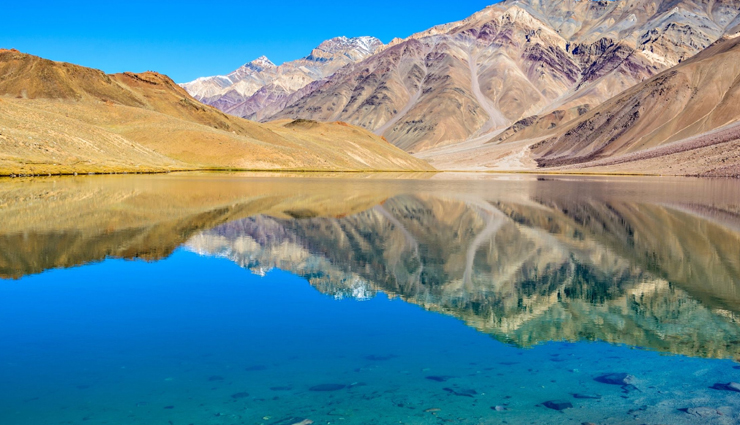
# Chandratal Lake
Chandratal Lake, also known as the Moon Lake, is a breathtaking high-altitude lake located in the Spiti Valley of Himachal Pradesh, India. Situated at an elevation of approximately 4,300 meters (14,100 feet) above sea level, it is one of the most picturesque and enchanting destinations in the region.
The name "Chandratal" translates to "Lake of the Moon" in Hindi, owing to its crescent moon-like shape. The lake is surrounded by snow-capped mountains, barren landscapes, and meadows, creating a surreal and otherworldly atmosphere. Its pristine waters reflect the surrounding mountains and the ever-changing colors of the sky, making it a photographer's paradise.
Reaching Chandratal Lake is an adventure in itself, as it requires a challenging journey through rugged terrain and high mountain passes. The lake is accessible from Batal, a small village located on the Manali-Kaza route. From Batal, visitors have to embark on a scenic trek of approximately 14 kilometers (8.7 miles) or arrange for a four-wheel-drive vehicle to navigate the rough and rocky trail.
The trek to Chandratal Lake offers mesmerizing views of the Spiti Valley's landscapes, including vast meadows, towering cliffs, and the majestic Chandra River flowing alongside. As you approach the lake, the pristine blue waters against the backdrop of towering mountains create an awe-inspiring sight that leaves a lasting impression.
Camping near Chandratal Lake is a popular activity for visitors, providing a unique opportunity to experience the tranquility of the surroundings and witness the starry night sky. Camping permits are required, and basic facilities are available for a rustic camping experience. Waking up to the serene beauty of the lake and the surrounding peaks is an unforgettable experience.
Chandratal Lake holds a special significance in local mythology and folklore. It is believed to be a sacred spot where deities and fairies reside. Visitors are often captivated by the mystical aura and the sense of peace and serenity that permeates the area.
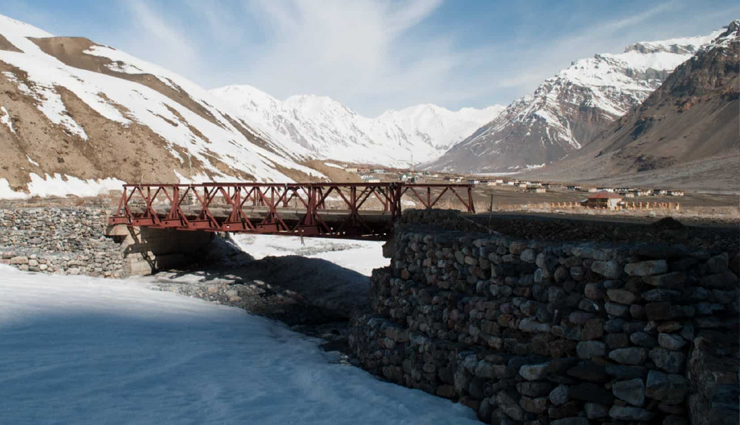
# Kunzum Pass
Kunzum Pass is a high mountain pass located in the Spiti Valley. Situated at an elevation of approximately 4,590 meters (15,060 feet) above sea level, it serves as a gateway between the Lahaul Valley and the Spiti Valley. The pass is named after the Goddess Kunzum, who is believed to protect travelers from natural calamities.
Kunzum Pass is a popular destination among adventure enthusiasts, nature lovers, and photographers due to its stunning vistas and challenging terrain. The pass offers panoramic views of snow-capped peaks, rugged mountains, and vast stretches of barren landscapes, showcasing the raw and untamed beauty of the Himalayas.
The journey to Kunzum Pass is an adventure in itself, as it requires traversing treacherous roads and negotiating hairpin bends. The pass is accessible via the Manali-Kaza route, which is known for its challenging and thrilling drive. Travelers can also approach Kunzum Pass from the Lahaul Valley side, starting from the town of Gramphu.
One of the highlights of Kunzum Pass is the breathtaking view of the Chandratal Lake, which lies a few kilometers away from the pass. The glacial lake, nestled amidst the rugged mountains, is a shimmering turquoise gem and a popular camping spot. The sight of the lake against the backdrop of snow-capped peaks is truly awe-inspiring.
The area around Kunzum Pass is also significant for its religious and cultural heritage. At the top of the pass, travelers often pay their respects at the Kunzum Mata Temple, which is dedicated to the Goddess Kunzum. It is customary for visitors to circle the temple in a clockwise direction and seek blessings for a safe journey.
Due to its high altitude, Kunzum Pass is open only during the summer months, typically from June to September, when the snow has melted and the roads are relatively clear. It is important for travelers to be prepared for the high altitude and the possibility of adverse weather conditions, as the pass is prone to sudden changes in weather.
Kunzum Pass serves as a strategic route for trade and cultural exchange between the Lahaul and Spiti Valleys. It has been an important trade route for centuries, connecting the remote Himalayan regions with the rest of the country. Today, it attracts travelers seeking an offbeat and adventurous experience, allowing them to witness the raw and untouched landscapes of the Spiti Valley.
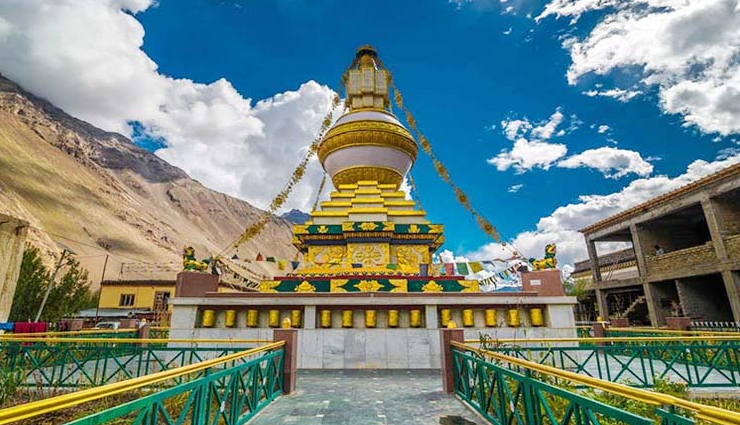
# Tabo Monastery
Tabo Monastery, also known as Tabo Chos-Khor, is a significant Buddhist monastery located in the Spiti Valley. It is renowned as one of the oldest continuously functioning monasteries in the Himalayan region, with a history dating back over a thousand years.
Founded in 996 CE, Tabo Monastery is a treasure trove of ancient art, culture, and Buddhist scriptures. It is often referred to as the "Ajanta of the Himalayas" due to its exquisite murals and intricate frescoes that adorn its walls. The monastery is a UNESCO World Heritage Site and holds immense religious and historical importance.
The architecture of Tabo Monastery reflects the influence of Tibetan and Indian styles. The complex consists of several temples, assembly halls, and residential quarters for the monks. The main temple, known as the Temple of the Enlightened Gods, is adorned with beautiful paintings depicting scenes from the life of Buddha, various deities, and mythological figures.
One of the significant attractions of Tabo Monastery is the extensive collection of ancient scriptures and manuscripts it houses. The monastery's library contains a vast array of Buddhist texts, some of which are believed to be over a thousand years old. These scriptures provide valuable insights into the history, philosophy, and teachings of Tibetan Buddhism.
Tabo Monastery is not only a religious and cultural center but also serves as a hub for Buddhist studies and meditation. It is home to a community of monks who engage in religious practices, study Buddhist philosophy, and carry out rituals and ceremonies. Visitors to the monastery can witness the monks' daily routines and participate in prayer sessions, providing a glimpse into the monastic life and spiritual practices.
The serene and tranquil ambiance of Tabo Monastery, set against the backdrop of the majestic Himalayas, offers a perfect environment for introspection, meditation, and spiritual contemplation. Many visitors find solace and inner peace while exploring the monastery and its surroundings.
Apart from its religious and cultural significance, Tabo Monastery also hosts the Tabo Monastery Festival, which is celebrated annually in the Tibetan month of October. During this festival, monks perform sacred dances, mask dances, and religious rituals, attracting a large number of devotees and tourists from far and wide.
Tabo Monastery is accessible throughout the year, although extreme weather conditions during the winter months (November to February) may limit access. The best time to visit is during the summer months (June to September) when the weather is relatively pleasant, and the roads to Spiti Valley are open.
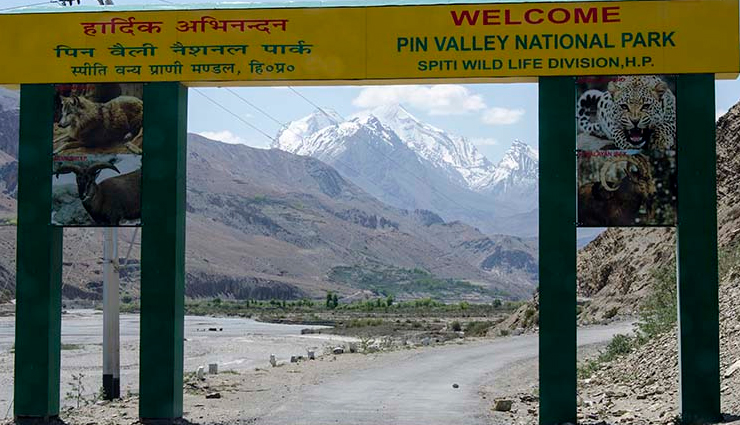
# Pin Valley National Park
Pin Valley National Park is a picturesque and biodiverse national park located in the Spiti Valley. Established in 1987, it is one of the most important protected areas in the region and spans an area of approximately 970 square kilometers (375 square miles).
The national park derives its name from the Pin River, which flows through its rugged terrain. The park is characterized by its stunning landscapes, ranging from snow-capped peaks and glaciers to alpine meadows and barren cliffs. The diverse topography creates a habitat that supports a wide range of flora and fauna.
Pin Valley National Park is known for its unique ecosystem and rich biodiversity. It is home to numerous rare and endangered species, making it a haven for wildlife enthusiasts and nature lovers. The park is particularly famous for its population of snow leopards, which are elusive and highly adapted to the harsh mountain environment. Other notable wildlife species found in the park include ibex, Himalayan marmots, Tibetan gazelles, red foxes, and various bird species.
The vegetation in Pin Valley National Park varies with altitude and includes alpine meadows, high-altitude desert shrubs, and coniferous forests. The park is known for its vibrant and colorful flora, with wildflowers carpeting the meadows during the summer months.
The park offers several trekking routes that allow visitors to explore its natural beauty and observe its wildlife. The most popular trek is the Pin Parvati Pass trek, which takes trekkers through the park's stunning landscapes and over the high-altitude pass. The trek provides breathtaking views of glaciers, mountains, and valleys, offering a truly immersive experience in the lap of nature.
For those interested in cultural exploration, Pin Valley National Park is also home to several traditional Tibetan villages. These villages have preserved their unique way of life, architecture, and cultural practices over the centuries. Visitors can interact with the locals, experience their warm hospitality, and learn about their customs and traditions.
The best time to visit Pin Valley National Park is during the summer months, from June to September, when the weather is relatively pleasant and the park is accessible. However, it's important to note that the weather can be unpredictable, and visitors should come prepared for sudden changes in temperature and carry appropriate clothing and equipment.
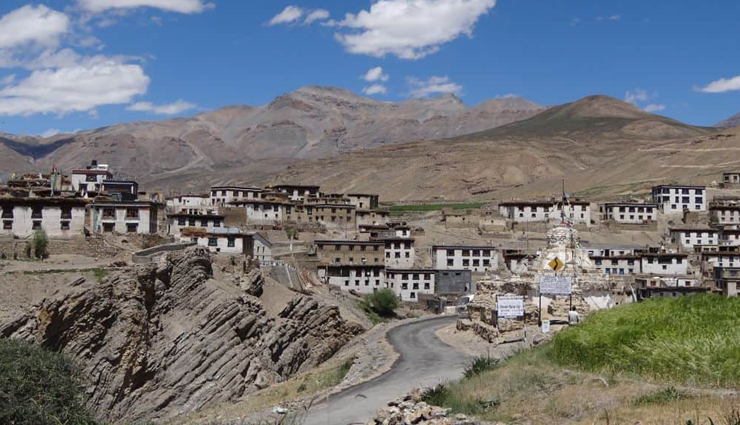
# Kibber
Kibber is a charming village located in the Spiti Valley Situated at an altitude of approximately 4,270 meters (14,010 feet), it is one of the highest inhabited villages in the world. Kibber is renowned for its breathtaking landscapes, traditional culture, and unique way of life.
The village of Kibber is nestled amidst the rugged Himalayan mountains, offering panoramic views of snow-capped peaks, deep valleys, and vast expanses of barren terrain. The surrounding landscape is characterized by stark beauty and a sense of isolation, making it a paradise for nature lovers and adventure seekers.
Kibber is known for its traditional architecture, with houses made of stone and mud, reflecting the local construction techniques that have withstood the test of time. The village has a small population, primarily consisting of farmers and shepherds who lead a simple and self-sustained lifestyle.
One of the main attractions in Kibber is the Kibber Wildlife Sanctuary, which is home to various wildlife species. The sanctuary is particularly famous for its population of snow leopards, Himalayan wolves, Tibetan gazelles, ibex, and several bird species. Wildlife enthusiasts can explore the sanctuary through guided treks or wildlife spotting tours.
Kibber also serves as a base camp for treks to high-altitude destinations in the Spiti Valley. Popular trekking routes from Kibber include the trek to Chicham Village, the Parang La Pass trek, and the trek to Tso Moriri Lake in Ladakh. These treks offer an opportunity to witness the raw beauty of the Himalayas and immerse oneself in the tranquility of the remote wilderness.
The village is also renowned for its rich cultural heritage. The locals follow Tibetan Buddhism and have preserved their traditional customs, rituals, and festivals. The Tangyud Monastery, located in Kibber, is a significant religious site and a major attraction for visitors. The monastery showcases beautiful murals, ancient artifacts, and a serene ambiance for spiritual contemplation.
Kibber is accessible by road, and it is approximately 18 kilometers (11 miles) away from the town of Kaza, which serves as the administrative center of the Spiti Valley. It is advisable to visit Kibber during the summer months (June to September) when the weather is relatively pleasant and the roads are open.
Visiting Kibber offers a unique opportunity to experience the traditional Himalayan way of life, witness breathtaking landscapes, and connect with nature in its purest form. The village's remote location, coupled with its cultural richness and natural splendor, makes it a must-visit destination for travelers seeking an offbeat and authentic experience in the Spiti Valley.
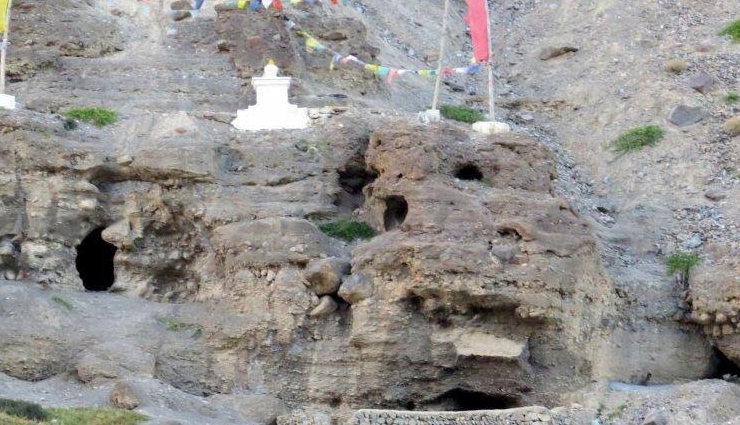
# Tabo Caves
Tabo Caves, also known as Tabo Caves and Meditation Caves, are a series of ancient caves located near the Tabo Monastery in the Spiti Valley. These caves hold great religious and historical significance and are considered an important part of the Buddhist heritage in the region.
The Tabo Caves date back to around a thousand years and were primarily used by Buddhist monks as meditation retreats. These caves provided seclusion and a peaceful environment for the monks to engage in intensive meditation and spiritual practices. The caves were carved into the cliffs surrounding the Tabo Monastery, creating a unique and serene setting.
The caves are simple in design, typically consisting of small chambers with stone walls and minimal furnishings. Some caves have basic stone beds or platforms where the monks would sit or sleep during their meditative retreats. The caves are interconnected through narrow passages, creating a network of meditative spaces.
Tabo Caves hold historical and religious significance as they were once inhabited by renowned Buddhist scholars and practitioners. It is believed that many renowned Buddhist masters and scholars, including the famous Indian scholar Atisha, meditated in these caves. The caves have witnessed centuries of spiritual practices and have been a place of profound introspection and enlightenment.
Exploring the Tabo Caves provides a glimpse into the ancient Buddhist traditions and the rigorous practices undertaken by monks in their quest for spiritual awakening. The caves offer a serene and contemplative atmosphere, allowing visitors to connect with the essence of Buddhism and experience a sense of tranquility.
Apart from their religious and historical importance, the Tabo Caves also offer breathtaking views of the surrounding landscapes. The caves overlook the Tabo Monastery and provide panoramic vistas of the Spiti Valley's rugged mountains, barren cliffs, and the meandering Spiti River. It's a perfect spot to soak in the natural beauty and find inner peace.
Visitors to the Tabo Caves are advised to be respectful of the sacred nature of the site and follow any guidelines provided by the authorities or caretakers. It is essential to maintain the caves' sanctity and preserve their historical and cultural value for future generations.

# Spiti River
The Spiti River is a major river in the Indian state of Himachal Pradesh. It flows through the Spiti Valley, a remote and beautiful mountainous region located in the northeastern part of Himachal Pradesh. The river originates from the Kunzum Range of the Himalayas and is a tributary of the Sutlej River.
The Spiti Valley is known for its rugged landscapes, barren mountains, and picturesque villages. It is often referred to as a desert mountain valley due to its high altitude and sparse vegetation. The valley is surrounded by snow-capped peaks, some of which reach heights of over 6,000 meters (19,700 feet).
Spiti Valley is famous for its ancient Buddhist monasteries, including Key Monastery, Dhankar Monastery, and Tabo Monastery, which are important religious and cultural centers for the local Tibetan Buddhist population. These monasteries are adorned with beautiful murals, sculptures, and thangka paintings.
The region is also popular among adventure enthusiasts and trekkers. It offers opportunities for activities like trekking, mountaineering, and camping. The challenging terrain and high altitude make it an ideal destination for those seeking an adventurous experience.
Due to its remote location and high altitude, Spiti Valley remains relatively untouched by modern development. The valley is accessible by road, and it is recommended to visit during the summer months, as heavy snowfall during winters makes the roads impassable. The journey to Spiti Valley offers breathtaking views and a chance to experience the unique culture and lifestyle of the local people.
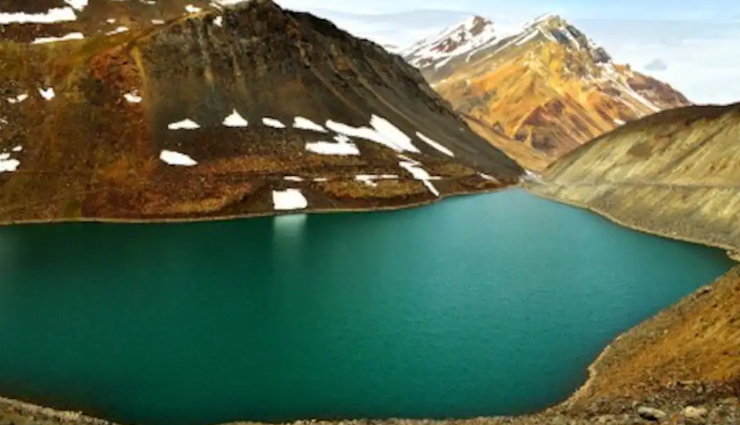
# Suraj Tal
Suraj Tal, also known as Suraj Tal Lake, is a high-altitude lake located in the Spiti Valley of Himachal Pradesh. It is considered one of the highest lakes in the world, situated at an elevation of approximately 4,883 meters (16,020 feet) above sea level.
Suraj Tal is a glacial lake formed by the melting snow and glaciers from the surrounding mountains. It is fed by the Bara-lacha La pass, which is a high mountain pass that connects Lahaul and Ladakh regions. The lake is located near the Bara-lacha La pass, which is at an altitude of around 4,890 meters (16,040 feet).
The name "Suraj Tal" translates to "Lake of the Sun" in English, derived from the fact that the lake reflects the golden hues of sunlight. The water of the lake appears to change color throughout the day, ranging from deep blue to emerald green, depending on the angle of the sun's rays.
Suraj Tal is known for its stunning natural beauty and picturesque surroundings. The turquoise-colored waters of the lake, surrounded by snow-capped peaks and barren mountains, create a mesmerizing sight. It is a popular stopover for travelers and adventurers crossing the Bara-lacha La pass.
The lake holds religious significance for the local people, and they consider it sacred. Many travelers also stop at Suraj Tal to pay their respects and offer prayers. The area around the lake is serene and offers a peaceful environment for visitors.
Access to Suraj Tal is primarily through road transportation. It is located on the Manali-Leh Highway, which is a popular route for travelers heading to Leh in Ladakh. The lake is approximately 65 kilometers (40 miles) from Keylong, the administrative center of the Lahaul and Spiti district.
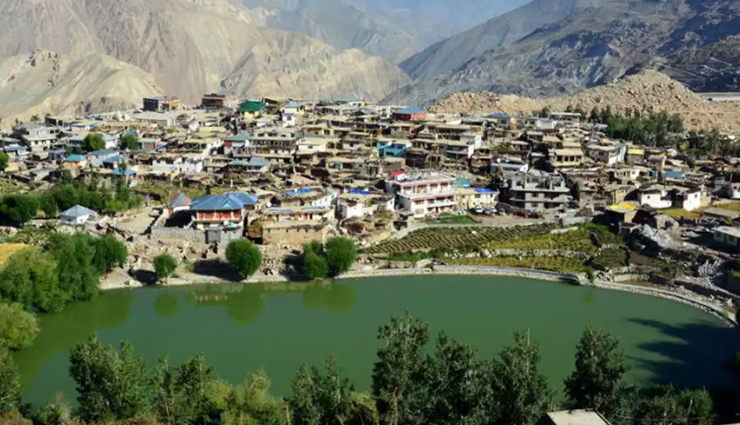
# Nako Village
Nako Village is a small and picturesque village located in the Spiti Valley. It is situated at an altitude of approximately 3,662 meters (12,014 feet) above sea level. Nako is known for its serene beauty, ancient monastery, and a tranquil lake.
The village of Nako is nestled amidst the rugged and barren landscapes of the Spiti Valley. It is surrounded by snow-capped mountains, offering breathtaking panoramic views. The village is characterized by its traditional Tibetan-style houses made of stone and mud, giving it a rustic charm.
One of the main attractions in Nako is the Nako Lake, also called Nako Tso. The lake is a small and serene body of water, located at the edge of the village. It is known for its clear blue waters and reflections of the surrounding mountains. Nako Lake is considered sacred by the locals and is often visited for its spiritual significance.
Nako is also home to an ancient Buddhist monastery called Nako Gompa or Nako Monastery. It is believed to be over a thousand years old and is an important religious and cultural center in the region. The monastery houses various Buddhist artifacts, murals, and statues. Visitors can witness the peaceful ambiance and soak in the spiritual atmosphere of the monastery.
The village offers opportunities for short hikes and walks, allowing visitors to explore the beautiful surroundings and enjoy the tranquility of the area. The locals in Nako are predominantly of Tibetan descent and follow Tibetan Buddhism, adding to the cultural richness of the village.
Access to Nako Village is primarily through road transportation. It is located on the Hindustan-Tibet Road (NH-505), which connects Kinnaur district to Spiti Valley. The village is approximately 100 kilometers (62 miles) from the town of Kalpa and 140 kilometers (87 miles) from the town of Tabo.
It's important to note that Nako Village, like other parts of Spiti Valley, experiences extreme weather conditions. The winters can be harsh with heavy snowfall, making the village inaccessible during certain months. Therefore, it's advisable to plan a visit to Nako during the summer months when the weather is more favorable.





